Hip fracture
A hip to rebuilt
![]() A 25 years old man may need - too - an osseous bone graft. During the war, a lost bullet, the man curls up hit in the groin. In emergency, the problem was to save his life. The hip problem is secondary. In this case, natural coral, an allograft and two surgical procedures were necessary to rebuild the hip.
A 25 years old man may need - too - an osseous bone graft. During the war, a lost bullet, the man curls up hit in the groin. In emergency, the problem was to save his life. The hip problem is secondary. In this case, natural coral, an allograft and two surgical procedures were necessary to rebuild the hip.
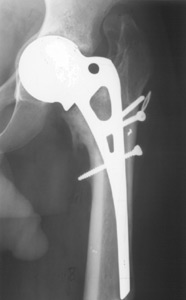 |
Two problems occured |
|
|
A pelvis problem: The acetabular wall is thin due to the head femoral stem protrusion. It needs to be reinforced. For that purpose, natural coral and bone marrow were necessary. |
A femoral problem:
The left limb is 6 cm shorter due to the bone loss of the upper femoral extremity. The stem has laminated the lateral femoral cortex. It will be necessary to equalize both limbs and rebuilt the femoral shaft. Two steps will be necessary to solve these problems. |
|
Pre-operative schema
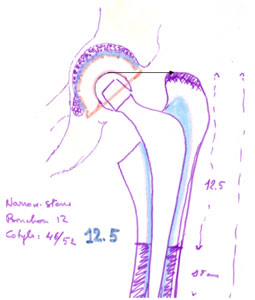 |
First step - Acetabular reconstruction: -
Femoral reconstruction:
|
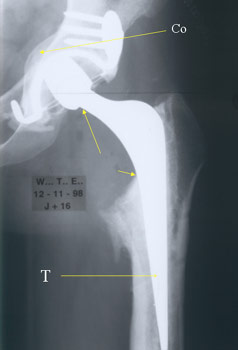 |
First step The upper femoral extremity exploded because of the bullet's shot (head and femoral neck). Fossa acetabulum is filled with natural coral (Co). A metallic Kerboull's cross is fixed. The femoral shaft is filled with an allograft bone chips according to the Exeter 's technique. Note the large overhanging of the femoral stem on the medial cortex and the thin and small Exeter 's femoral stem device (T) in the center of the medullar canal. |
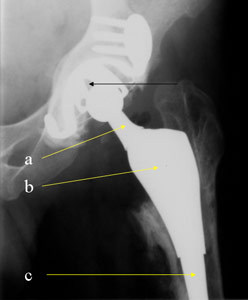 |
Second step Three weeks later Removal of the femoral component replaced by a medullary femoral implant with a long and curved stem. Small femoral neck (a). |
The long stem
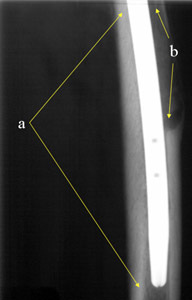 |
The anatomic stem overtakes the cortical bone loss (b) and fills the femoral shaft curve (a).
|
| Lower Limb pathology: Femur |